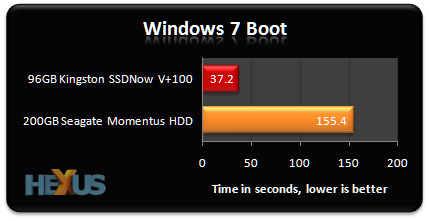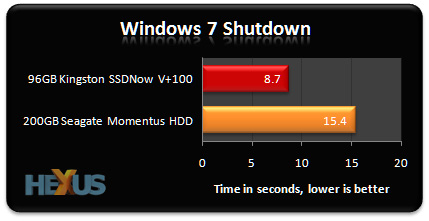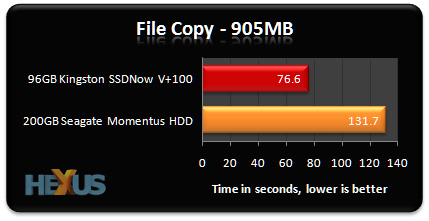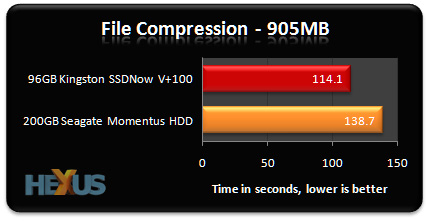Real-world benchmarks

How impressive is that? By upgrading a single component, we've reduced the average time taken to cold boot into the Windows 7 desktop by over 75 per cent.

The SSD upgrade has a similar effect on shutting down, too. The same notebook turns off 43 per cent quicker following the transition from HDD to SSD.

In this test, we launch a Chrome web browser with six tabs, six instances of Internet Explorer, Word, Excel, PowerPoint, Windows Media Player and Adobe Photoshop with a 60MB image.
That's more than most would run at any one time, but the results are impressive nonetheless. With the notebook using the 200GB hard disk as its primary storage device, the applications take over a minute-and-a-half to launch. Upgrading to the Kingston SSD reduces that time to an average of just 22.5 seconds.

In the habit of copying data from one folder to another? An SSD could help you there, too.
For this benchmark, we copy a 905MB folder containing 11,431 files in 1,320 folders from Program Files to the User Desktop. The SSD shaves over 40 per cent off of the time taken.

The process of compressing that 905MB folder into a zip file is also quickened, and at this point we reckon the CPU could become the bottleneck.
The overall increase in performance is astounding, and these select benchmarks don't tell the entire story; everything from launching a single app or a single file feels noticeably more responsive with the SSD.









